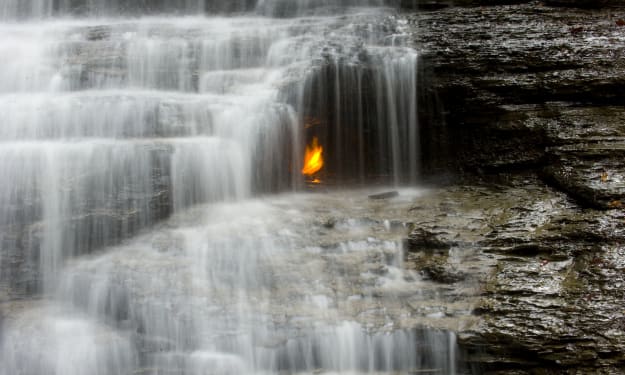The Curious World of Raccoons
Nature's Clever Masked Bandits

Introduction
Raccoons, the masked bandits of the natural world, have long captured the fascination of both wildlife enthusiasts and city dwellers. With their distinctive black mask-like markings across their eyes and ringed tails, raccoons exude an air of mystery and mischief. Found primarily in North America, these intelligent and adaptive creatures have become a common sight in a variety of habitats, from dense forests to bustling urban areas.
In this article, we embark on a journey to unravel the captivating world of raccoons, exploring their unique characteristics, behavior, and remarkable ability to thrive in diverse environments. From their resourceful foraging skills to their astounding problem-solving capabilities, raccoons have earned a reputation as nature's clever survivors.
The Raccoon's Habitat and Range

Raccoons are truly versatile creatures, found in a diverse range of habitats. They can thrive in lush forests, suburban neighborhoods, and bustling urban areas with equal ease. While they are native to North America, specifically the United States and Canada, their adaptability has led to successful introductions in other regions around the world, including Europe and Japan.
These nocturnal creatures are well-adapted to life in various environments, and their keen sense of smell and excellent climbing skills enable them to explore and utilize their surroundings effectively. Whether in dense woodlands, along water bodies, or amidst cityscapes, raccoons have demonstrated their ability to coexist with both nature and human landscapes.
Resourceful Foragers: Raccoon's Diet

One of the raccoon's most intriguing traits is their resourcefulness when it comes to food. As omnivores, their diet is incredibly diverse, including fruits, nuts, insects, small animals, and even human-made food scraps. Their front paws and sharp claws are remarkably dexterous, allowing them to access various food sources, which earned them the reputation of skilled foragers in the animal kingdom.
Raccoons' opportunistic feeding behavior plays a vital role in their survival and adaptability. Their ability to thrive in different environments can be attributed to their flexible dietary preferences. They display a keen interest in exploring various food sources, making them highly successful in both natural habitats and human-altered landscapes.
Clever and Curious: Raccoon Intelligence

Raccoons are renowned for their intelligence and problem-solving abilities. Studies have shown that they possess an impressive long-term memory, remembering solutions to tasks for up to three years. Their curious nature leads them to explore and investigate their surroundings, and they demonstrate remarkable problem-solving skills, such as opening latches, unscrewing jars, and even picking locks.
The raccoon's cognitive abilities have been a subject of interest for researchers, as they continue to unveil new aspects of their intelligence. Their adaptability to urban settings has presented opportunities for interaction with human-made objects, showcasing their capacity to innovate and overcome challenges in their quest for food and shelter.
Urban Coexistence: Raccoons in Cities

In recent years, raccoons have become increasingly visible in urban areas. Their adaptability has enabled them to thrive in metropolitan environments, where they scavenge for food and utilize man-made structures as nesting sites. While their presence can be delightful to some, it also poses challenges and conflicts with human populations, requiring thoughtful management and coexistence strategies.
Urban raccoons exhibit remarkable behavioral flexibility, adapting their activities to exploit the resources available in cities. They often venture into residential areas, where they may encounter humans and interact with their surroundings, leading to both positive and negative interactions. Responsible practices, such as securing trash cans and avoiding direct feeding, are essential to promote harmonious coexistence between humans and raccoons.
Raising a Family: Raccoon Reproduction

Raccoons are typically solitary creatures, but during mating season, they come together to find mates. After successful mating, female raccoons give birth to litters of adorable kits. The mother's dedication is evident as she nurtures and cares for her young until they are old enough to venture out on their own, usually around 8 to 12 months of age.
Raccoon mothers display extraordinary nurturing instincts, creating safe and secure dens to protect their kits from predators and harsh weather conditions. The family bond is strong, and the mother plays a crucial role in teaching her young essential survival skills. The early stages of a raccoon's life are critical for their development, shaping their abilities and behaviors as they grow into independent adults.
Conservation and Coexistence

As raccoons continue to adapt and thrive in various habitats, conservation efforts become crucial to maintain a harmonious balance with human activities. Responsible practices, such as securing trash cans, avoiding direct feeding, and managing urban environments with raccoon presence, can promote a positive coexistence with these fascinating creatures.
Raccoons serve as important components of their ecosystems, contributing to seed dispersal and insect control. Their adaptability to urban environments underscores the significance of understanding their behavior and needs to foster a peaceful relationship with humans. Emphasizing education and awareness can help mitigate conflicts and create a sustainable environment where raccoons can flourish alongside humans.
Conclusion
Raccoons, with their unique appearance and clever behaviors, have undoubtedly earned a special place in our hearts and minds. Their adaptability, intelligence, and resourcefulness make them fascinating subjects for study and observation. As we share our world with these masked bandits, it is essential to respect and appreciate their role in the ecosystem, promoting a sustainable coexistence that benefits both humans and raccoons alike.
Sources
National Geographic - Raccoon Facts






Comments
There are no comments for this story
Be the first to respond and start the conversation.